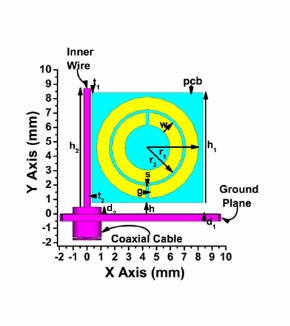May 9, 2011
10 Uses for Metamaterials. Beyond Star Trek. Way Beyond Harry Potter.
What the heck are ‘metamaterials’? ‘Meta’ means “above,” “after,” “beyond,” or “superior”, so they sound to be some sort of exotic composite materials. In scientific circles, they are artificial structures that display properties beyond those available naturally. They were first discovered in 1968 by a Russian theorist, Victor Veselago, who predicted that metamaterials would interact with their environment in a manner precisely the opposite of the way natural materials react. It took until 1999 for another scientist, Dr. Pendry, to show how it could be done.
Since then, there have been astounding advances in the field, which as garnered an amazing amount of press in the scientific world, most of it invisible to the average person. But it shouldn’t be because metamaterials will revolutionize our world and what we think it is.
Under most circumstances, we can see the world around us because things reflect or refract the rich spectrum of light rays. If we don’t want another person to see something, say a submarine or a ship, we would camouflage it. That can be done by distracting the viewer, hiding the signals that would be visible to electronic or human eye.
Metamaterials can hide stuff in that manner, but much much more effectively. Dr. Leonhardt explained it, “Cloaking is an illusion like a mirage. Taking advantage of curved space, you can put light in a holding pattern. Light can go around in a circle. That changes the game.” In simpler language, metamaterials have the power to “grab” electromagnetic radiation and deflect it smoothly. No such material occurs naturally and it is only in the past few years that nano-scale engineering, manipulating matter at the level of atoms and molecules, has advanced sufficiently to give scientists the chance to create them.
Because if the eye can’t see the refracted light, it can’t see the object. Get it? No longer can we believe what our eyes tell us. Here are some uses being considered for these amazing bits of science:
Figure out the Big Bang
Using metamaterials, scientists can create a “toy big bang” using precisely designed metamaterials that are mathematically analogous to certain conditions of the real-world big bang

Stronger, smaller antennas
The challenge of the antenna field is that there are fundamental limitations on antenna quality factor and its electrical size. By exciting metamaterial resonances, smaller antennas can be created. Rayspan Corp. of San Diego is using metamaterials to make stronger, smaller antennas. Although they measure just a few millimeters long and are as flat as paper, the new multiband antennas could double the range, reliability and battery life of cellular phones, Wi-Fi routers and wireless modems.
WMD Detectors
Army and Air Force researchers are using metamaterials to detect the presence of biological agents, chemical explosives, and contamination. This same science could be used for passenger or cargo screening.
Invisible Subs
Sound has a larger wavelength than light, so it’s easier to build meta-materials to manipulate it. An Office of Naval Research program is funding a prototype that bends sound around a submarine to make it invisible to enemy sonar. Civilian spinoffs could produce total soundproofing and rooms with perfect acoustics.

Invisibility cloak from metamaterials bends pressure waves around the sub
Hidden Portals to ??
New research into metamaterials have discovered a gateway that can block electromagnetic waves, but all the passage of other entities, like a ‘hidden portal’.
This is a spin-off of the technology used to make subs invisible. Not only could metamaterials soundproof a room, that would lead to perfect acoustics–not sound escaped, no extraneous noises got in
Revolutionary Electronics
Future circuits may use light rather than electricity, so Army engineers are building a metamaterial switching device, fundamental for building small, fast photonic equipment. The device combines a metamaterial with a semiconductor, so the ability to trap light can be turned on and off. Such photonic computer chips could be 10 times faster than current chips.
Hide Buildings from Earthquakes and Tsunamis
A researcher for the University of Utah named Graeme Milton has developed a new cloaking method that may someday allow buildings and other large objects to be shielded from things like sonar, radar, earthquakes, and even tsunamis. “We proved mathematically that this method works when the wavelength of incoming electromagnetic radiation is large compared with the objects being cloaked, meaning it can cloak very small objects,” Milton says. “It also can cloak larger objects,” says Graeme Milton, a distinguished professor of mathematics at the University of Utah.
Don’t discount the proof because it’s ‘mathematical’. Consider physicists. Some are practical, believing only what their eyes can see, while others are theoretical physicists, believing if they can prove it in the lab or with numbers, it could occur. Einstein was the latter.

These images are from animated computer simulations of a new method — developed by University of Utah mathematicians — for cloaking objects from waves of all sorts.
Create the oft-discussed, Invisible Man
Image deleted







